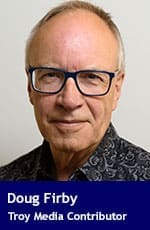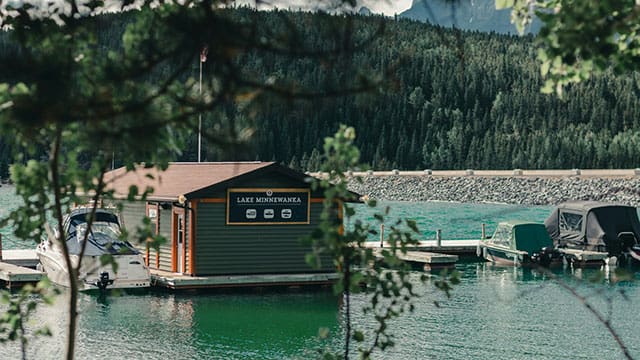U.S. firm’s effective monopoly on sightseeing attractions in Banff and Jasper parks is sparking debate and competition concerns

For interview requests, click here
My column on how one company has brazenly gained control of most paid sightseeing attractions in Banff, Jasper and Waterton national parks has drawn angry and cynical responses from readers.
Some readers were angry that the U.S.-based company, Pursuit, a subsidiary of VIAD Corp., of Phoenix, AZ, has an effective monopoly. Many noted there have been rapid rises in prices for attractions since Pursuit has taken over. Others questioned whose palms at Parks Canada are getting greased.
The question that’s needling me, however, is how did this happen? Is it incompetence or indifference? Influence? Or good old-fashioned entrepreneurial opportunity? Organizations that should be talking, like Parks Canada, are not saying much. But what I’ve learned so far from other sources is disturbing.
 Photo by Ali Kazal |
| Recommended |
| Why private operation of public parks makes sense
|
| The amazing wild horses of Sable Island
|
| Don’t feed the bears! How parks get visitors to protect nature
|
A quick recap. With Parks Canada’s approval this month of Pursuit’s $25-million purchase of the Jasper SkyTram, the company now owns six of the nine public tourist attractions and more than 90 percent of the marketplace in Banff and Jasper national parks: the Banff Gondola at Sulphur Mountain, Lake Minnewanka Cruise, Columbia Icefield Adventure, Jasper’s Maligne Lake Cruise and the Columbia Icefield Skywalk. It also owns the Brewster Express bus line and 10 hotels in the parks.
The only sightseeing attractions not controlled by Pursuit are gondolas or chairlifts at Norquay, Sunshine Village and Lake Louise ski resorts.
Adam Waterous, chair of Norquay Mystic Ridge Inc., has filed a complaint with Parks Canada and the Competition Bureau of Canada, alleging Pursuit’s monopoly is harmful to the public. Watrous alleges the ownership has degraded the environment by increasing congestion in the Town of Banff and driving up prices for tourists.
The Competition Bureau would not comment on whether there is an active investigation in response to Waterous’s complaint. VIAD did not respond to interview requests. VIAD, in fact, does not appear to have a media relations contact, referring inquiries instead to investor relations, which did not respond to me.
Not terribly helpful. So, I turned to a news release about the purchase published on the VIAD website. CEO Steve Moster seemed to be talking to investors directly when he said the Jasper SkyTram “is a perfect strategic fit in Pursuit’s Banff Jasper Collection and the only sightseeing aerial ropeway in Jasper National Park. …
“During 2024, we expect the Jasper SkyTram to add revenue of approximately $4 million, expressed in U.S. dollars, with an adjusted EBITDA margin that is accretive to Pursuit’s overall margin.”
For non-financial folks, like myself, Moster is saying the purchase will help the company make more money.
I’ve often wondered what’s going on inside the heads of Parks Canada officials when decisions like this get made, so I contact their media people.
I received this email statement:
“All businesses operating within Parks Canada administered sites have land use agreements. Parks Canada ensures that businesses operate in a manner that complies with all applicable acts.
“Parks Canada will collaborate with Competition Bureau Canada if requested.”
Unsatisfied, I turned to someone who was in the organization for many years. I promised not to name him so that he could speak freely.
He noted that many of the attractions Pursuit has acquired have come up for sale because the families that owned them had no succession plan and felt it was time to get out. He cited the boat tours on Minnewanka and Maligne lakes as two examples. Pursuit is one of only a few companies with the money and desire to acquire them.
When a company buys a business in a national park, it acquires both the hard assets and the lease under which the business operates. VIAD noted in its news release that the SkyTram sale came with a long-term lease, with nearly 30 years remaining and the opportunity to negotiate a renewal with Parks Canada after that.
The buyer is also bound by the terms of the lease, which typically bars any activity outside of lease boundaries and imposes a series of conditions to ensure the environment is not harmed. “When you buy it, you buy it with your eyes open,” said my insider.
Here’s the thing. When Parks Canada evaluates a sale, it is primarily looking to ensure the buyer is willing and able to live up to the terms of the lease. As spelled out in the Parks Canada mandate, the objective is to maintain “as a first priority, the natural and cultural heritage of our special places and ensure that they remain healthy and whole.”
Parks Canada’s mandate is silent on monopolies, pricing, and other vagaries of the tourism business. My insider notes that the National Parks Act was established to protect our unique wild spaces, not to ensure tourists get the best deal. In the absence of any tourism mandate, the tourism operators are free to behave as they wish, within the boundaries of other laws, such as the Competition Act.
The real danger of a monopoly, however, is that the tourism operators who have control of several assets have leverage, which they can use to force politicians to make decisions that may not be in the best interest of the parks. The monopolist can lobby politicians, bureaucrats and local municipal officials in towns like Banff and Jasper to bring them onside with expansive plans.
For example, “They could decide they want to put more boats on Minnewanka,” said my source. Increasingly, it becomes harder for the agency to deny such requests.
And, yes, they can set just about any price they think the market will tolerate, even if that puts certain features out of reach for some.
Does Parks Canada really not care about this monopoly? We don’t know because the people who could say are keeping quiet. Maybe they’re afraid of risking their careers if they speak out.
Doug Firby is an award-winning editorial writer with over four decades of experience working for newspapers, magazines and online publications in Ontario and western Canada. Previously, he served as Editorial Page Editor at the Calgary Herald.
Explore more on Canadian National Parks, Things to do in Alberta
The opinions expressed by our columnists and contributors are theirs alone and do not inherently or expressly reflect the views of our publication.
Troy Media
Troy Media is an editorial content provider to media outlets and its own hosted community news outlets across Canada.

